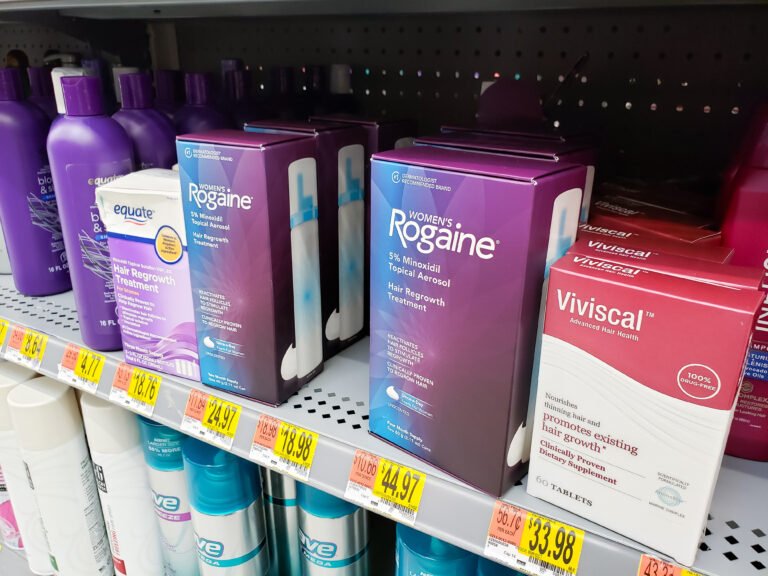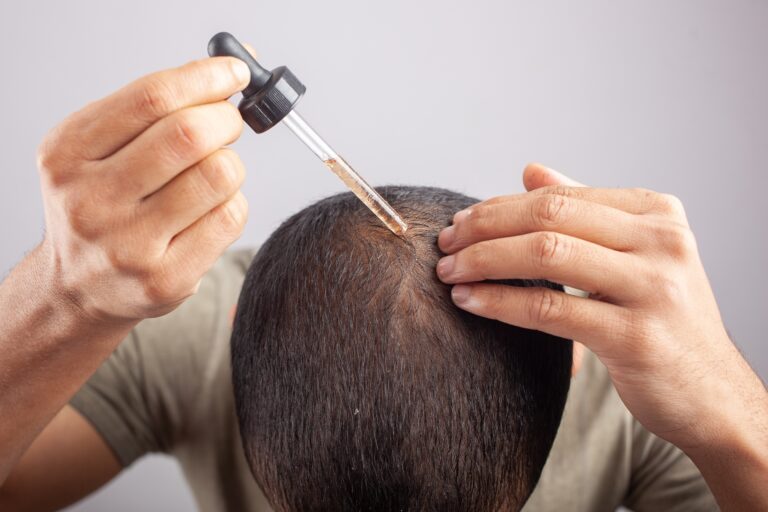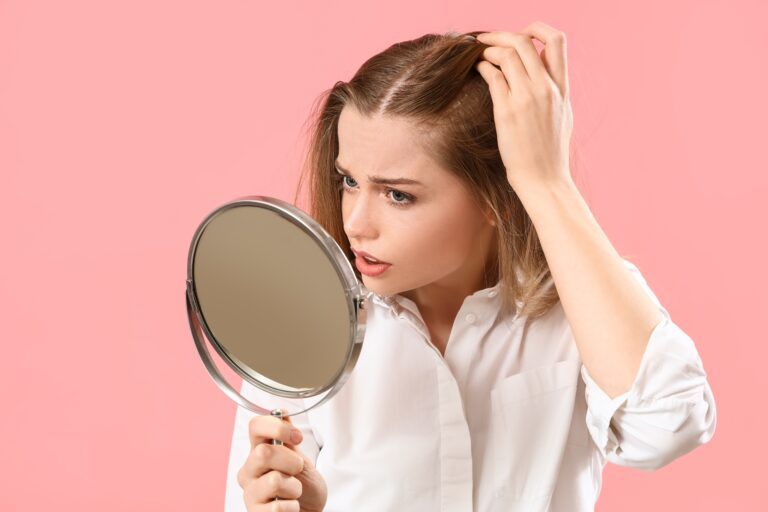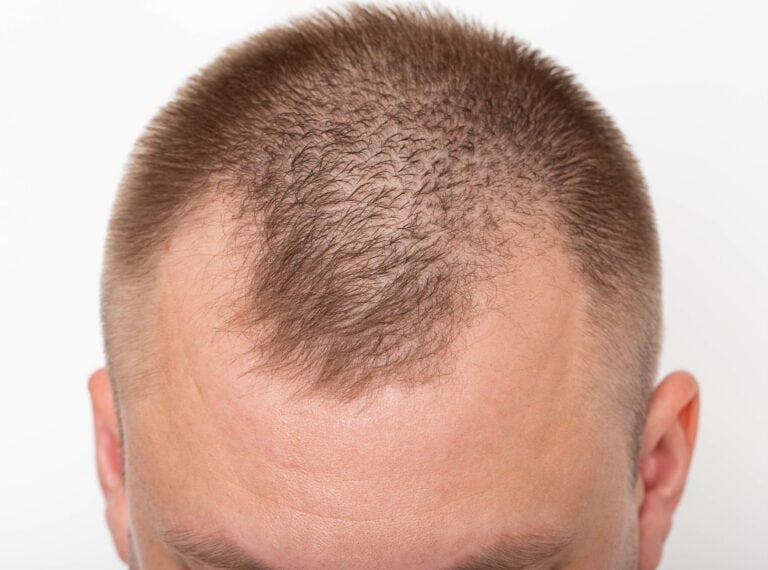Finasteride and Dutasteride Together: Should You Combine Treatments for Hair Loss?
Finasteride and Dutasteride are among the most popular medications used to treat male pattern baldness and hair loss. Ideally, doctors will prescribe only one of the two medications to treat the condition.
If you’re tempted to double down for faster results, you might consider using finasteride and dutasteride together, but is it a good idea to combine the two drugs?
In this guide, we’ll explore the potential advantages and downsides of using these medications in tandem, so you can have a better understanding of the combination.
How the Two Drugs Work for Treating Hair Loss
As the two names suggest, finasteride and dutasteride are closely related chemical compounds with a fairly similar chemical structure and mechanisms of action.
The culprit behind hair loss in our bodies is a hormone called “dihydrotestosterone” or “DHT”. The accumulation of this hormone in hair follicles causes them to get thinner and much more likely to fall off.
DHT is created from testosterone hormone by the action of an enzyme called 5-alpha reductase (5-AR), and that’s where finasteride and dutasteride come into play.
The two drugs work by blocking the 5AR enzyme, reducing the concentration of DHT, which reduces its ability to cause hair loss and even promote regrowth of hair.
What Are the Differences Between Finasteride and Dutasteride?
Although both finasteride and dutasteride share a lot of similarities, they also have distinctions that make them stand out from one another.
In this section, we’ll tackle these differences to help you have a better understanding of the two medications.
Potency and Dosage
One of the main differences between finasteride and dutasteride is that the latter is a noticeably more potent drug.
While both of them work by inhibiting the action of the 5-alpha reductase enzyme, dutasteride blocks two types of the enzyme while finasteride only blocks a single type.
This difference has a remarkable impact not only on the effectiveness of the drug but also on its dosage.
For instance, the typical dose of finasteride for hair loss is around 1 mg per day. On the other hand, the recommended dose of dutasteride is only 0.5 mg per day.
Additionally, a 2022 systematic review and meta-analysis shows that the effectiveness of dutasteride is exponentially higher than finasteride.
According to the study, a dose of 5 mg of finasteride per day reduces the DHT in the scalp by around 41%. However, as little as 0.5 mg of dutasteride lowered the scalp DHT by around 51%.
FDA Approval
One thing you should know about finasteride and dutasteride is that both of them were originally designed to treat enlarged prostate in men.
However, the drugs demonstrated their ability to treat male pattern baldness as a secondary effect during clinical trials.
Today, finasteride treatments like Propecia and Proscar are marketed as a treatment for the two conditions in different dosages. It’s also available in various dosage forms, including tablets and capsules.
Although there’s plenty of scientific evidence that shows dutasteride’s effectiveness in treating hair loss and male pattern baldness, the FDA only approves it for the treatment of enlarged prostates and it only exists in 0.5 mg capsules.
Yet, that didn’t stop many doctors from prescribing the drug as an “off label” treatment for hair loss thanks to its remarkable effectiveness.
Can You Use Finasteride and Dutasteride Together for Hair Loss?
Despite their similarities, combining finasteride and dutasteride for hair loss requires careful consideration.
Here are three common formats or approaches for using the two drugs together and what science says about them.
Combination Therapy
Using both finasteride and dutasteride at the same time within recommended doses may increase hair growth. However, the studies that support this approach are a bit limited in terms of their scope and reliability.
The most remarkable evidence about the effectiveness of combining the two drugs comes from a 2012 study in Australia.
According to the study, the patient didn’t notice any improvements with finasteride alone but noticed a remarkable improvement after adding 0.5 mg of dutasteride to his daily dose of 1 mg finasteride.
However, as established above, dutasteride is substantially more effective than finasteride, so the majority of action here might be caused by dutasteride alone.
The other problem with the combination approach is that it increases the risk of potential side effects associated with both drugs. These may include erectile dysfunction, ejaculation problems, and reduced libido.
Alternation Therapy
Technically speaking, there’s no conclusive evidence that alternating finasteride and dutasteride is effective for hair loss.
For instance, alternating between 0.5 mg of dutasteride on one day and 1 mg of finasteride on the other.
Alternation is typically a great approach in medications with high-risk side effects, as it reduces the chances of taking a higher dose of a single drug.
Interestingly, while dutasteride is more potent than finasteride, several studies reported that it has comparable adverse effects with similar rates, so you might as well switch entirely to the more effective counterpart if your doctor approves it.
What Is the Best Approach to Switch from Finasteride to Dutasteride?
Luckily, switching between finasteride and dutasteride doesn’t require any special procedures or considerations.
Since the two drugs belong to the same group, your doctor will typically prescribe dutasteride to be taken the day after the final dose of finasteride at the same time.
The good news here is that you won’t have to worry about initial side effects like heavy shedding since your hair cycle would already be pushed by finasteride.
Alternative Combinations for Hair Loss Treatment
If you’re looking for another combination therapy to get improved results while using finasteride or dutasteride, you should consider using either of them with topical minoxidil instead.
According to a study that compares the effect of using the two treatments against a combination of the two, it was found that combining the two methods showed the best possible results.
You may also consider additional approaches, such as oral supplementation, scalp microneedling, low-level laser therapy, and platelet-rich plasma (PRP) injections.
Final Thoughts
While the desire for a fast and effective solution to hair loss is totally understandable, using finasteride and dutasteride together isn’t usually the best approach with a noticeable lack of evidence supporting its efficacy while posing a higher risk of side effects.
Instead, you might want to consult your doctor to explore other approaches and alternative combinations with well-supported evidence for effectiveness.







